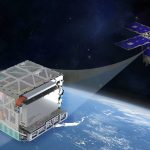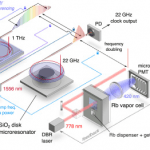GPS clearly dominates the current market in positioning and navigation (POS/NAV). Besides being globally available, it provides the whole range of navigation accuracies at very low cost. GPS is also highly portable, has low power consumption, and is well suited for integration with other sensors, communication links, and databases.
GPS clearly dominates the current market in positioning and navigation (POS/NAV). Besides being globally available, it provides the whole range of navigation accuracies at very low cost. GPS is also highly portable, has low power consumption, and is well suited for integration with other sensors, communication links, and databases.
At this point in the development of navigation technology, the need for alternative positioning systems only arises because GPS does not work in all environments. Current GPS receiver chips are reaching a unit price of about $5, and the predictions are that this figure will drop to about $1 when, most likely, it will level off.
Module cost is not equivalent to system cost, but the recent development of receivers at a price of $100 shows clearly that module costs are an important factor, not only in consumer mass markets, but also for high-volume commercial products, such as asset and container tracking.
Even more important is the fact that with unit cost that low, GPS is becoming a commodity, comparable to a Sony Walkman, pocket calculators, or a digital wristwatch. Thus, personal GPS devices will drive the module market and provide navigation receivers of high versatility at even lower cost.
Considering these price trends, can any POS/NAV technology be competitive with GPS?
At this point the answer is clearly in the negative. Therefore, other navigation technologies would typically be developed for “non-GPS” environments, that is, for environments in which GPS does not function at all (underground, underwater, in buildings) or where it performs poorly (forested areas, urban environments). Although a substantial navigation market for operating in “non-GPS” environments exists, it is much smaller than the one predicted for GPS.
In the portion of the market where GPS is only available for part of the time, the question will be, “How much is the user willing to pay for a continuous navigation solution?” This obviously will depend on the specific application, and it might be possible that niche markets will develop around such applications.
In such applications, integrated solutions will be of high interest and may involve sensor integration as well as data base integration for techniques such as map matching. In those applications where GPS does not work at all, the search for cost-effective alternatives will continue.
One promising development is the emergence of micro-electromechanical systems (MEMS) technology (also known as micromachined technology). MEMS is an enabling technology with a massive global market volume worth $12 billion in 2004 and is expected to reach $25 billion in 2009 (Source: “NEXUS Market Analysis for MEMS and Microsystems III, 2005-2009”). This means that, overall, MEMS technology will be much larger than the market size of GPS at that time.
A small portion of this MEMS market will support inertial sensor technology. Yole development estimated that the world markets for MEMS-based inertial sensors have reached almost $0.7 billion in 2004 and will exceed $1 billion in 2008. The major growth opportunities will come from automotive and consumer application markets, with a steady growth of the industrial and defense business, too. (Source: World MEMS Inertial Sensor Markets, Research Report # YD4264, Yole Development, April 2005).
Since INS technology is capable of working in all environments where GPS has difficulties, MEMS inertial technology is seen as both a possible complement of GPS technology and a potential alternative to GPS is market volumes develop in the way anticipated. The idea of an “inertial measurement unit (IMU) on a chip” and unit cost as low as GPS modules are anticipated in the very near future.
(For the rest of story, tables, graphs and formulas, please download the complete article using the PDF link above.)





